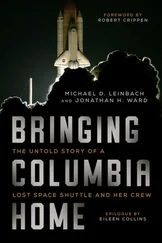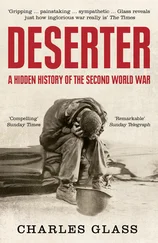Despite our continuous emphasis on security, on the need to prevent any Stingers or missiles reaching the enemy, the inevitable eventually happened. Twice, in early 1987, we lost Stingers, firstly to the Soviets, and then to the Iranians.
We had trained a team destined to operate in the Kandahar area under the infamous Mulla Malang (‘the Butcher’). On his way back to his base of operations with three Stingers he was successfully ambushed by a Spetsnaz unit. Despite my personal briefing on how to move tactically and remain alert, he managed to break all the rules of security. He put two grip-stocks and four missiles in his advance party, while he, with the remaining Stinger, followed some way behind with his main body. The advance party had halted and were caught napping by the Spetsnaz, who suddenly descended on the Mujahideen in helicopters. Far from being shot down, the gunships landed and disgorged the commandos who proceeded to kill or capture the entire group, with the exception of one man who escaped. The Soviets must have been well rewarded when they returned with such valuable booty.
For months I hesitated to deploy Stingers in the provinces bordering Iran. There was a real risk of its being sold or given to the Iranians. However, after we knew the Soviets had captured some I decided to take the chance. I introduced the weapon to sensitive areas near Herat, Shindand and other suitable areas near the Iranian border. Tooran Ismail of Herat was the first Commander of this region to get Stingers through his deputy, former Colonel Alauddin, who came to Pakistan for training, and later escorted the missiles himself. Thereafter we selected a less important Commander from Khalis’ Party. After training, he was given two new vehicles and escorted up to the border, where he was briefed at length on the route he should take through Helmand Province. On no account was he to go into Iran. Inexcusably this Commander returned to Quetta after a short journey into Afghanistan, on the pretext of collecting more weapons, leaving his party to continue without him. They had difficulty crossing the Helmand River and deviated from their intended route. Whether by accident or design they ended up being arrested in Iranian territory by the Passadars (Iranian Border Scouts). They had with them four Stinger launchers and sixteen missiles. Rcpeated efforts by Khalis and Rabbani, who had excellent contacts in Iran, failed to get them returned. The Iranian authorities never actually refused to give them back, they just kept delaying their release with one excuse or another. To this day we have never seen these missiles again. I do not know if it is generally known that Iran has had access to these weapons since 1987. I can only pray they never end up with a terrorist organization. Needless to say, it was the last time Khalis got any Stingers while I remained in office.
“Alexander next marched to the Oxus note 8 Note8 Amu
opposite Kilif, where
the river was about three-quarters of a mile wide. It was crossed
by means of skins stuffed with chaff …. it took in all five days.”
Major-General J.F.C. Fuller, The Generalship of Alexander the Great, 1958.
SOME 2,300 years after Alexander had crossed the Amu a high-ranking American official was examining this river on my map. His interest was focused on that part of it that formed the border between the Soviet Union and Afghanistan, particularly where it meandered for some 500 kilometres across the plain from Badakshan in the east to just beyond Kilif in the west. Then, using Winston Churchill’s famous phrase, coined during World War 2 about Italy, he declared, “This is the soft underbelly of the Soviet Union”. William Casey was thus the first person seriously to advocate operations against the Soviets inside their own territory. In his view the ethnic, tribal and religious ties of the people who lived on both sides of this river should be exploited. He was convinced that stirring up trouble in this region would be certain to give the Russian bear a bellyache. He suggested to General Akhtar that perhaps a start could be made by smuggling written propaganda material across, to be followed by arms to encourage local uprisings. Akhtar agreed to consider the written materials, but deliberately did not respond on the explosive issue of weapons.
Thus it was the US that put in train a major escalation of the war which, over the next three years, culminated in numerous cross-border raids and sabotage missions north of the Amu. During this period we were specifically to train and despatch hundreds of Mujahideen up to 25 kilometres deep inside the Soviet Union. They were probably the most secret and sensitive operations of the war. They only occurred during my time with ISI as in 1987, an audacious, and successful attack on an industrial site well north of the river caused the water temperature to come perilously close to boiling, which compelled Prime Minister Junejo to halt them. There was, for a short while, real fear among the politicians that the Soviet Union and Pakistan might go to war. It was a dangerous game. Casey had been correct—we were touching an extremely tender spot.
As I write this the world has witnessed the communist empire crumbling round its edges, including its southern edges. The Kremlin has always been concerned to keep the lid on its ethnic minorities, particularly those who were faithful to Islam. The Afghan border touches three Soviet Republics Turkmenistan, Uzbekistan and Tajikistan; it divides two countries but it does not divide the people (see Map 19). The Turkomens, Uzbeks and Tajiks of Afghanistan share the same culture, history, languages, apprearance and religion with their neighbours a few hundred metres away over the frontier. Moscow’s specific worry was the spread of fundamentalism and its influence on Soviet Central Asian Muslims. This was one of the reasons for the invasion in the first place, to prevent the possibility of a Khomeini-style regime sweeping aside the fledgling communist government in Kabul. It had removed a threat to the Soviet Union’s southern border. This fear of fundamentalism was one that they shared with the US, and which, I believe, was ultimately to prevent an outright military victory for the Mujahideen in 1989. When Casey studied the map, what did he see? He was looking at a region that had political and economic, as well as military, importance. The Kremlin had no wish to see political instability in the area, no wish to see a religious revival which could not only disrupt the war effort, but might merge with a nationalistic movement aimed at greater autonomy, or even independence. The Soviet military presence in these republics, and in Afghanistan, was also protecting an investment. These southern regions were a rich source of natural gas, oil and minerals for Moscow. Considerable effort had been made to develop these natural resources, to build up an industrial infrastructure, and expand road, rail and air communications.
Over the past three decades the Soviets had used the mask of international aid to explore, identify and map the natural resources of Afghanistan. Their invasion was substantially motivated by the need to seize them. Indeed, within a few months they had stolen millions of dollars worth of precious stones, including 2.2 kilos of uncut emeralds, from government stores. Eighty per cent of all natural gas flowed from the fields around Shibarghan, north over the Amu. Even the metering of the amount was carried out in the Soviet Union, and Soviet officials decided the price they would pay, or rather be credited against Afghanistan’s ‘debt’ to Moscow. As far as I am aware this milking of the Afghan economy continues today.
Southern Central Asia had only belonged to the Soviets for about a hundred years. It was a part of their empire acquired by force, and it still required force to retain it. Modern Termez, the centre of their base of supply for the war, had begun its life as a Russian fort in 1897, but for over 2,000 years before that few Russians had ever ventured that far south. This area which boasted one of the hottest temperatures recorded in the Soviet Union, 50 degrees centigrade, had seen Alexander’s army when it recrossed the Amu nearby on its return from Samarkand on the march to India. The ancient town of Termez flourished in the first century BC, welcomed Islam from the Arabs, was sacked by Ghengis Khan’s Golden Horde, became a part of Tamerlane’s empire, and was again destroyed at the end of the 17th century.
Читать дальше












